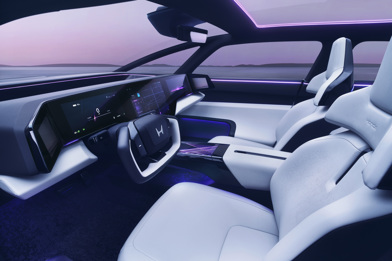As Rally New Zealand officials work through the COVID-19 uncertainty to finalise plans for the 2020 return to the World Rally Championship, let’s look back exactly 17 years to a time when New Zealand hosted the WRC twice in the span of six months.
Big changes for the 2003 WRC season saw New Zealand bumped up the calendar to run the fourth round of the championship. The April 10-13 event followed Monte Carlo, Sweden and Turkey on a 14-round calendar and ran only six months after the October 2002 event.

Through most of its WRC tenure Rally New Zealand had been a mid-winter or early spring event. The earliest a WRC event had been held in New Zealand was the first week of May 1977.
Between 2003-2005 the rally came early in the year before the WRC calendar flipped again in 2006 and after an 18-month break Rally New Zealand became the penultimate round of the championship in November.
Willard Martin, the current Clerk of Course for Rally of New Zealand, was the route co-ordinator and assistant clerk of course for the 2003 event. He says the fast turnaround from 2002 to 2003 went very smoothly.
"The big thing about 2003 was that it was a dream to organise," says Martin.
"After the 2002 rally in October we kept all of the volunteers and marshal groups on board and just pushed on, instead of giving them a six-month holiday before bringing them back on board and training them up.
"It was the opposite when we alternated with Australia. With a two-year gap you start again from nothing."

A look back at 2003 reveals one of the strongest fields ever assembled in New Zealand. Factory team participation at the top end of the sport saw seven manufacturers represented with Peugeot, Ford, Subaru, Hyundai, Skoda and Citroen all sending factory teams to New Zealand while Mitsubishi was represented but not registered for the championship.
There were 21 WRC cars entered for the 2003 event and the Production WRC category was a fully-fledged 22-car international contest as well. The start list featured 80 cars.
The route covered three days and included two Saturday evening runs at the Manukau City super special stage that has since made way for the South Western motorway.
It was a familiar itinerary with Friday and Saturday heading north from Auckland to Paparoa, where uniquely the cars remained in an overnight parc ferme.

The Sunday run featured the Te Akau and Maramarua Forest stages. It was one of the few years when Rally New Zealand didn’t make a run around its signature Whaanga Coast stage along the Raglan coastline. There were 22 stages in total and 403km of competitive driving.
Finland’s Marcus Gronholm was the 2002 world champion and at the height of his powers in the early 2000s. After spearheading a Peugeot 1-2 in the late-2002 New Zealand event he did the same in 2003.
Gronholm took an early lead on the Northland roads and, in spite of briefly tipping his Peugeot 206 WRC on its side during day two and being rescued by spectators, he never relinquished the top position.

"Magic Marcus" claimed the third of what would eventually become a record five Rally New Zealand wins and led home team-mate Richard Burns by just over one minute.
Subaru’s Petter Solberg finished third and claimed valuable points in a title bid that saw him eventually win the championship by a single point at the end of the season.
A young Sebastien Loeb was making his first appearance on New Zealand roads and bettered his star Citroen team-mates Colin McRae and Carlos Sainz with a drive to fourth place.
The field had a star-studded line-up of drivers who had won world titles - or would go on to do so. That roster featured Gronholm, Burns, Solberg, Tommi Makinen, Didier Auriol, McRae, Loeb and Sainz as well as Stig Blomqvist who drove a Group N car.

Another feature of the sport at that time was the battle for local supremacy between Manawatu rivals Bruce Herbert and Geof Argyle. In 2003 it was Argyle who was the first Kiwi home taking 13th overall one spot ahead of Herbert.
There is also a heavy touch of sadness attached to a look back at 2003. For Possum Bourne (who would lose his life later the same month) as well as Richard Burns and Colin McRae, it would be last time they would compete in Rally New Zealand.
Picture guide: (Car 1) Marcus Gronholm on his way to victory in the Peugeot 206 WRC: (Car 2) Richard Burns’ Peugeot at the Paparoa service park: (Car 4) Markko Martin debuted the 2003-spec Ford Focus WRC and ran in second till halted by engine problems: (Car 7) Petter Solberg claimed third place points on his way to winning the world title: (Car 62) Kiwi legend Possum Bourne in his Group N Subaru Impreza: (Car 15) Toni Gardemeister claimed an excellent fifth place for the Skoda team: (Car 17) The Citroen team goes to work on Colin McRae’s Xsara WRC: (Car 18) Sebastien Loeb made his New Zealand debut and finished fourth: (Car 11) Freddy Loix crashed his Hyundai Accent on the final day: (Car 55) Manx driver Martin Rowe went on to win the 2003 Production World Rally Championship: (Scenic) Tommi Makinen attacks the North Auckland roads in his Subaru Impreza WRC.















